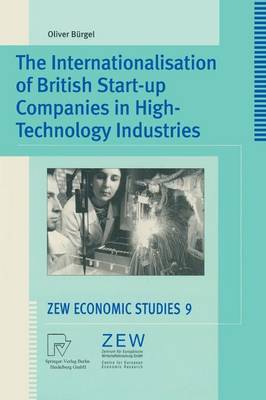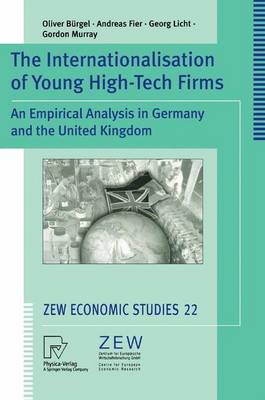ZEW Economic Studies
2 primary works
Book 9
The Internationalisation of British Start-up Companies in High-Technology Industries
by Oliver Burgel
Published 23 June 2000
There are 17 million small and medium-sized enterprises (SMEs) in the European Union which play an important role in economic life. Within this subset, increasing recognition is being given to "new technology-based ftrms. " 1 In the literature, different defmitions have been put forward to describe the term new technology-based ftrm (Oakey et a11988; Roberts 1991; Autio 1995; Storey and Tether 1998). Common denominators include that the activity is based on the exploitation of advanced technological know-how, the prior affiliation of founders with research establishments and the entrepreneurial character of the ftrm. Research studies in Europe, North America and the Paciftc Rim have identifted these ftrms' important contributions in new employment creation, export sales growth, product and process innovation and structural adjustment (e. g. Rothwell & Zegveld 1982; OECD 1986; Oakey et a11988; Acs & Audretsch 1991; Roberts 1991; Coopers & Lybrand 1996).
While there is a growing body of literature on new technology-based ftrms that concentrates on strategic issues such as access to fmancial resources, growth processes and innovation behaviour (see Storey and Tether 1998, for a review), there has been relatively little research into the process by which young high- technology companies have internationalised. Research activity in the latter fteld has historically been strongly oriented towards large ftrms or, more rarely, towards "traditional transnational SMEs" in the manufacturing sector that often act as suppliers of bigger ftrms and are characterised by simple production technologies and low-technology products (United Nations 1993).
While there is a growing body of literature on new technology-based ftrms that concentrates on strategic issues such as access to fmancial resources, growth processes and innovation behaviour (see Storey and Tether 1998, for a review), there has been relatively little research into the process by which young high- technology companies have internationalised. Research activity in the latter fteld has historically been strongly oriented towards large ftrms or, more rarely, towards "traditional transnational SMEs" in the manufacturing sector that often act as suppliers of bigger ftrms and are characterised by simple production technologies and low-technology products (United Nations 1993).
Book 22
The Internationalisation of Young High-Tech Firms
by Oliver Burgel, Andreas Fier, Georg Licht, and Gordon Murray
Published 31 October 2003
There is now a certain tradition of Anglo-German comparative research on new technology-based firms (NTBFs). Two of the most influential studies in this area have both been sponsored by the Anglo-German Foundation for the Study of In dustrial Society (AGF). Starting in 1977, the first AGF project on NTBFs, which was carried out by the consultancy firm Arthur D. Little, has been one ofthe most important early contributions in this field (Little 1977). This report was the first public document to use the term 'new technology-based firm' and to provide a definition, which despite its operational limitations subsequently became an es tablished term in the literature. More importantly, this study represented one ofthe first serious attempts to survey the existing stock of this type of firm. The report was critical of the contemporary situation in Europe. (This is a policy area which continues to be hotly debated, see European Commission 1995, Bank of England 1996 and HM Treasury 1998. ) It emphasised that, in comparison with the USA, Germany and the UK were each lagging behind if judged by the rate of formation of NTBFs and in their total contribution to the overall economic activity of both countries. In terms of a policy contribution, this study was instrumental in high lighting the lack ofsupport infrastructures for the genesis and growth of high-tech start-ups in two of Europe's leading economies.

